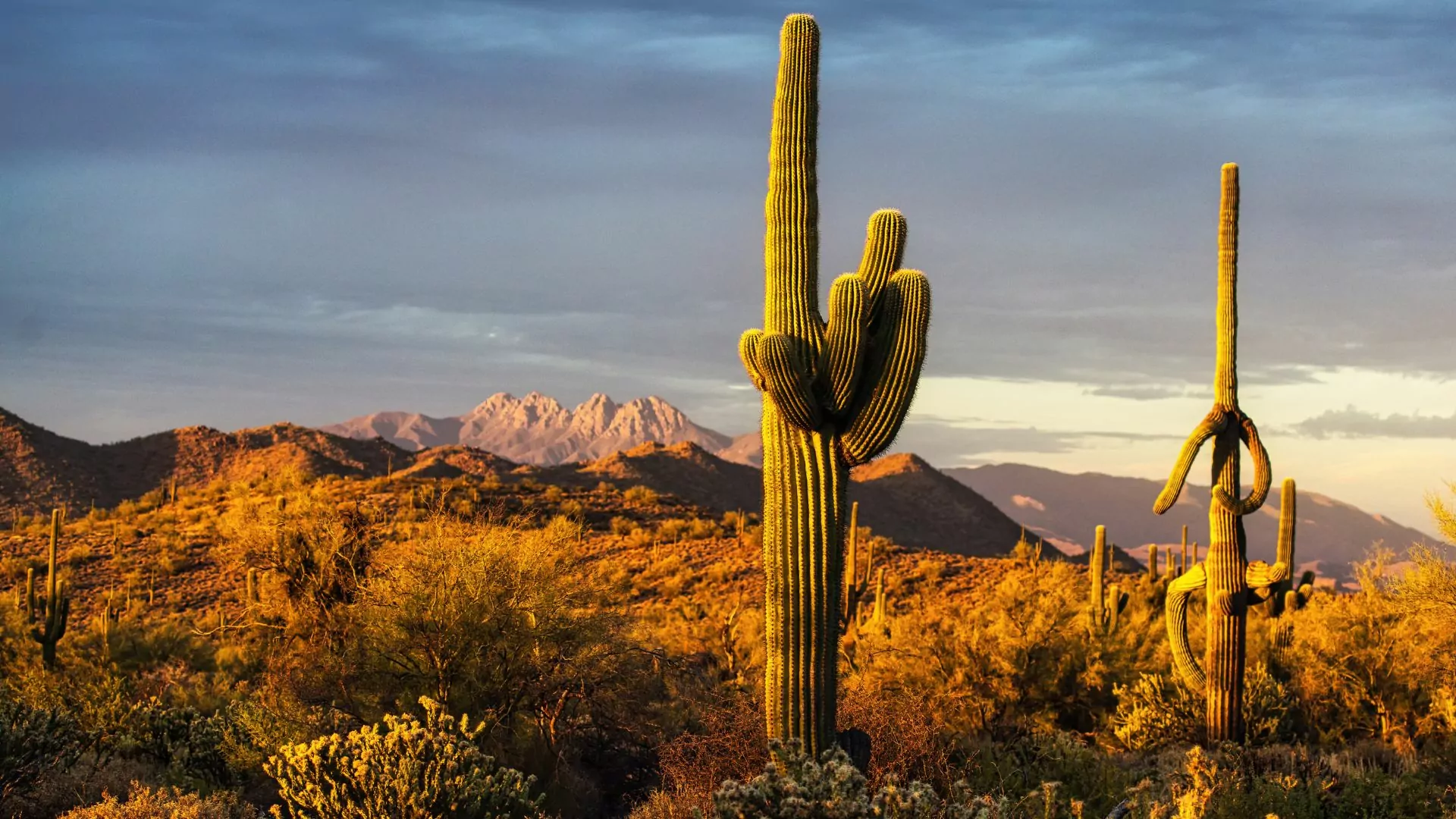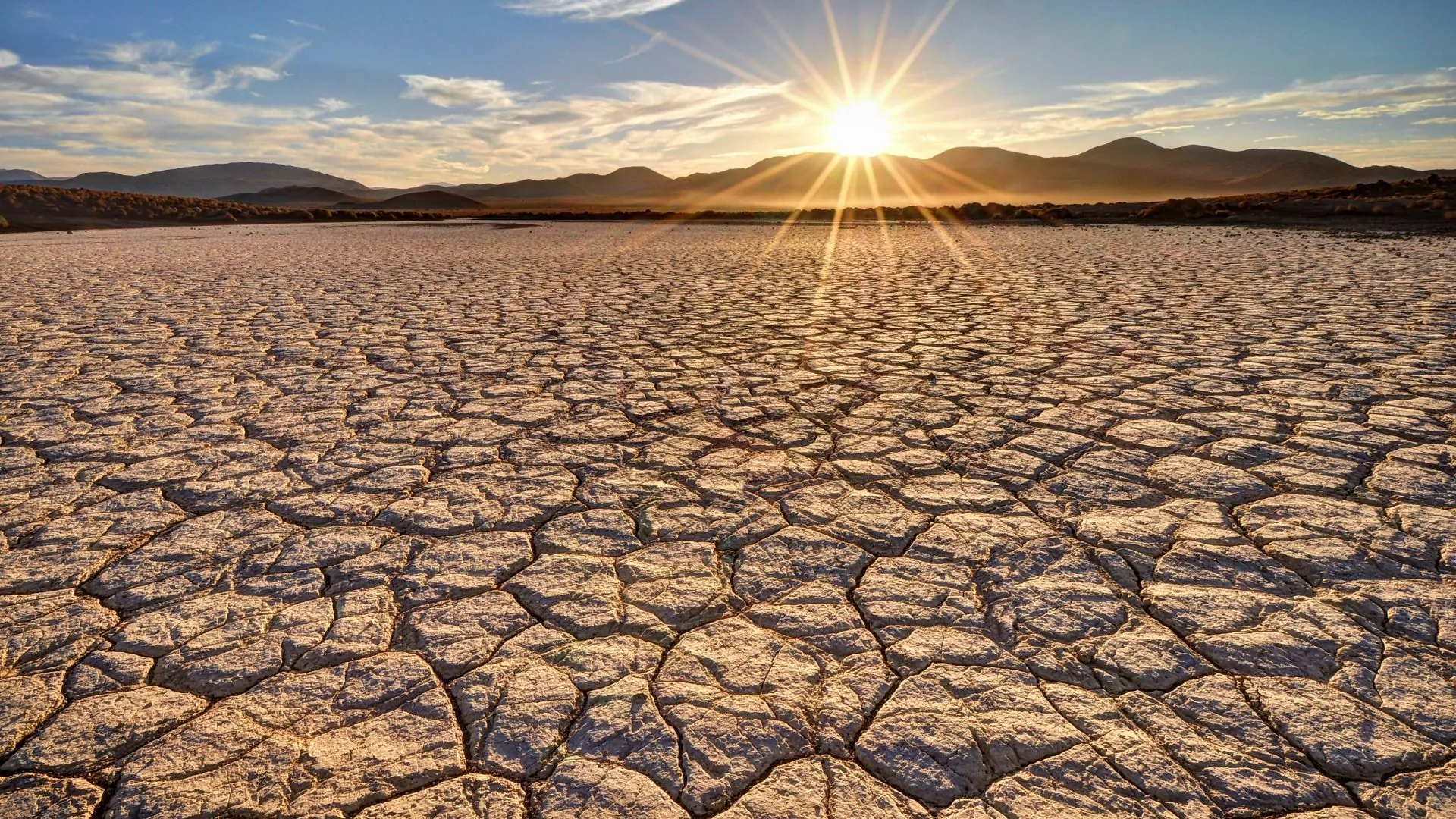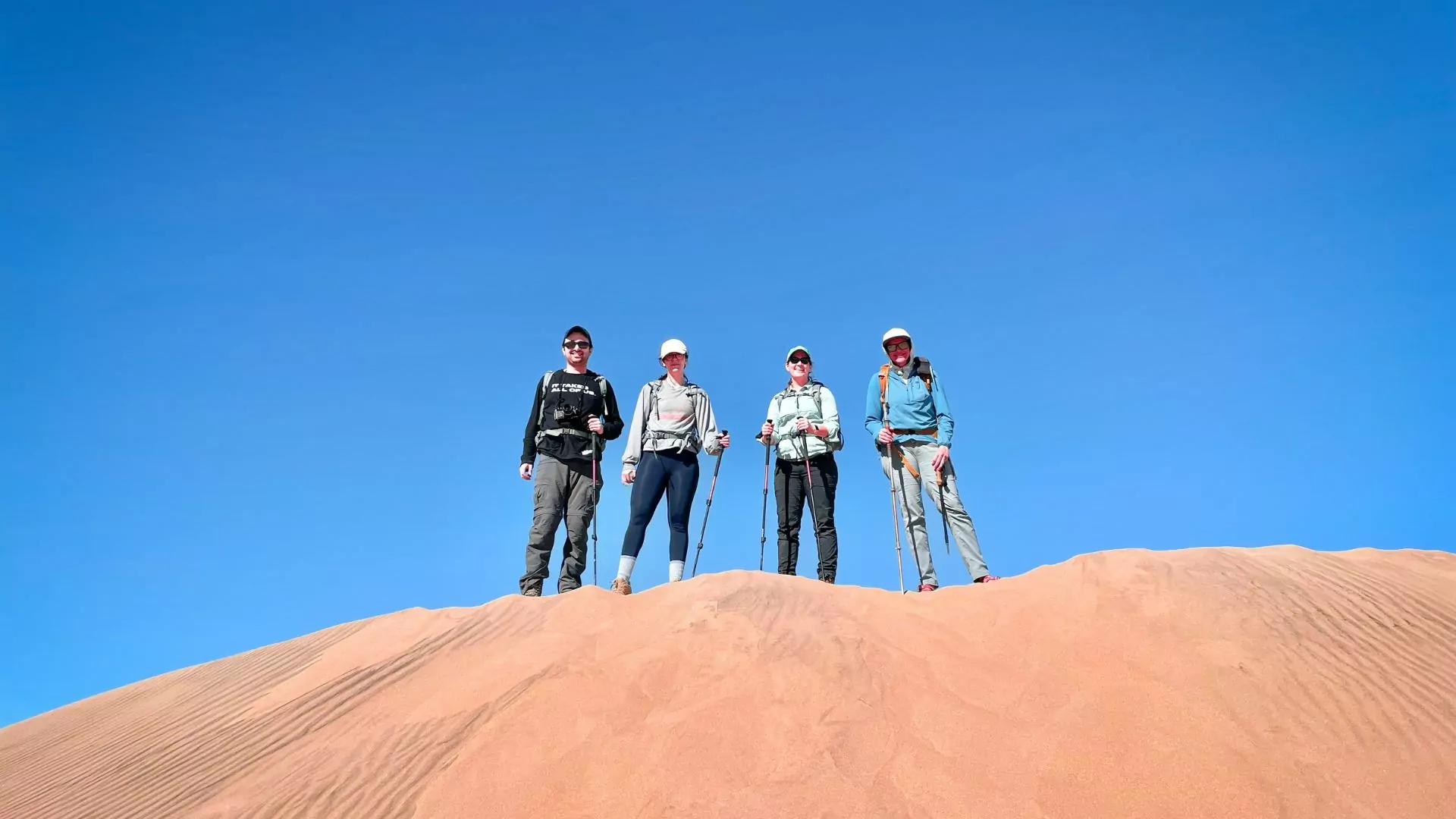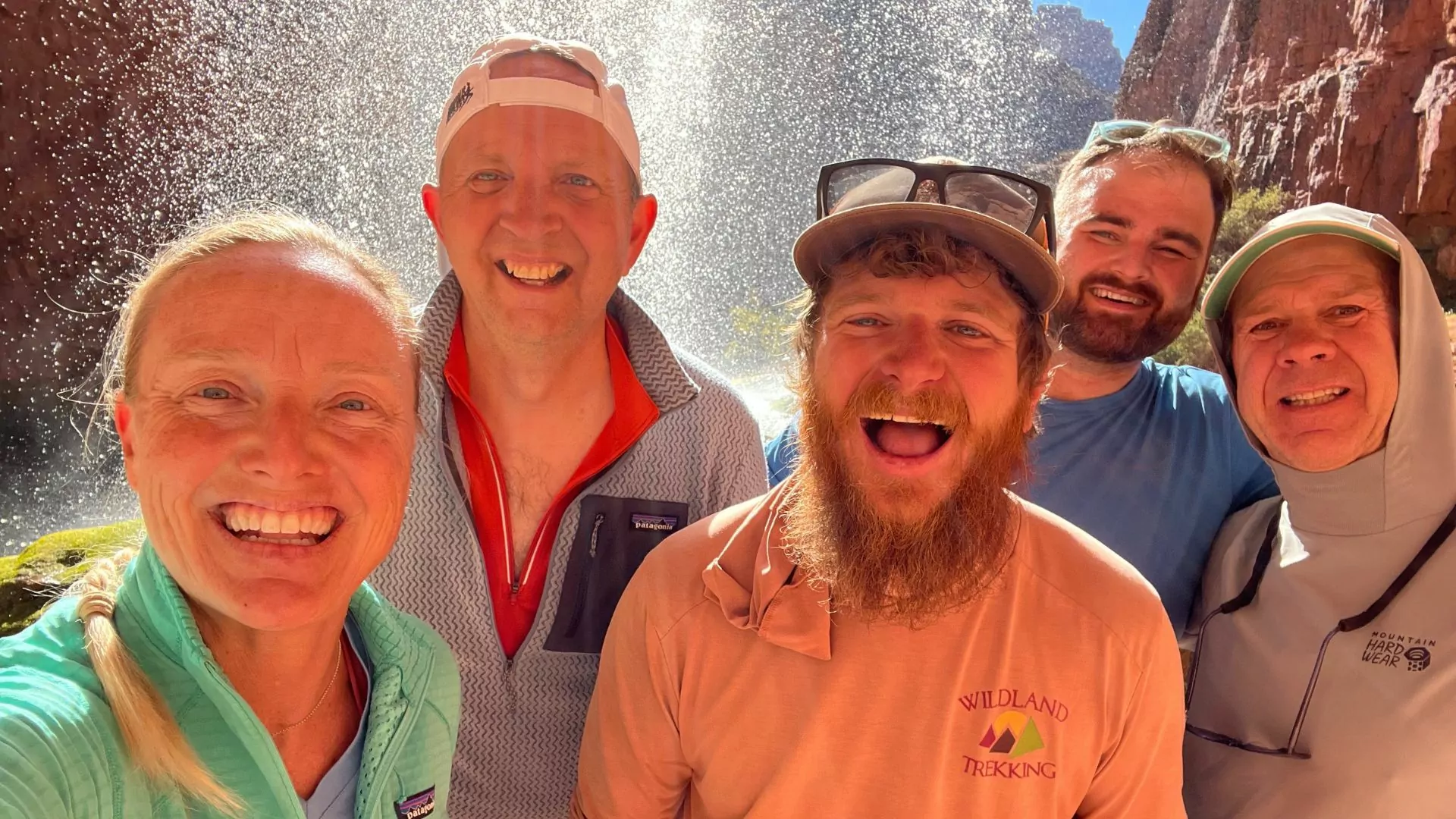What to Wear Hiking in the Summer
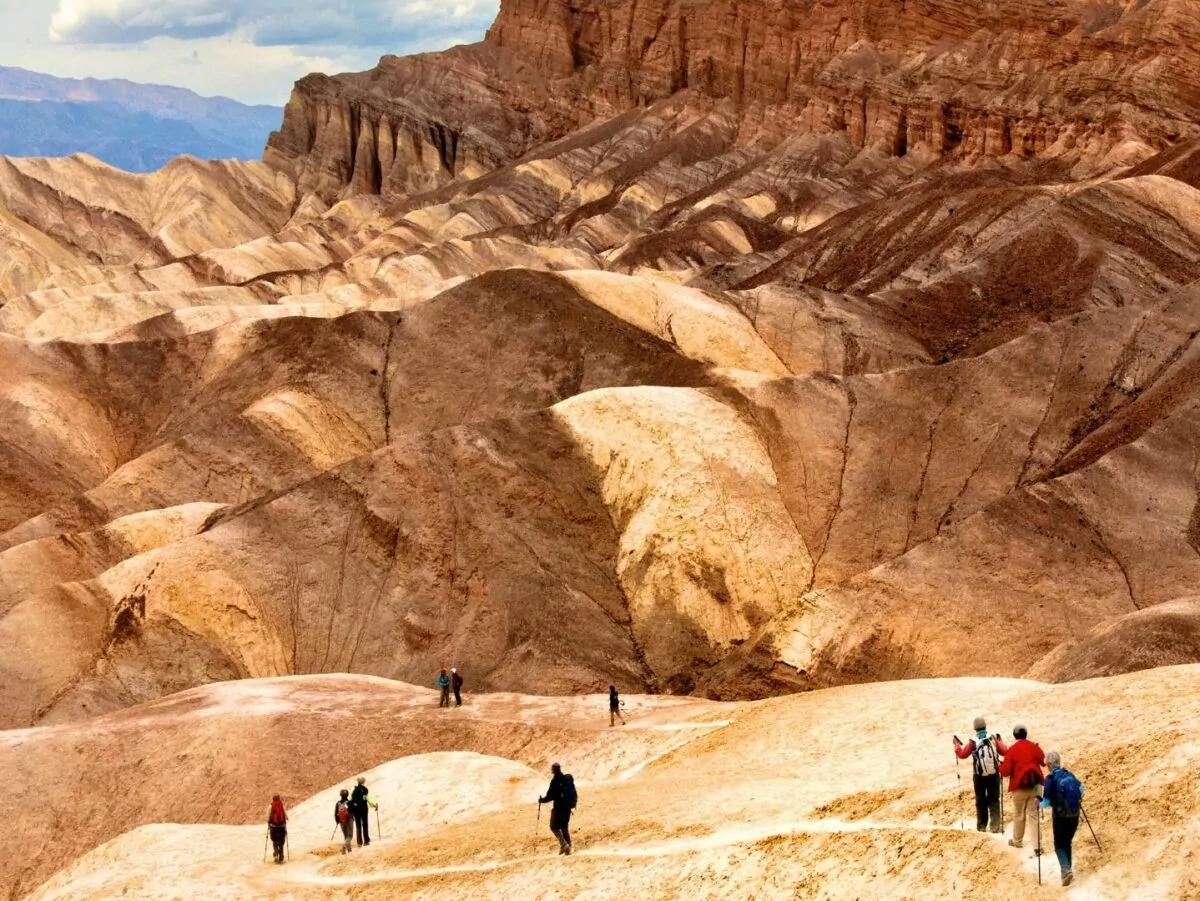
“Cotton kills!” This is probably a phrase you’ve heard thrown around about what not to wear on a hike. Although this may be true in cool mountain climates or the humid South, wearing cotton can actually be an important strategy when selecting summer hiking clothes. As a seasoned desert backpacking and day hike guide, I have a few tips and tricks for dressing in the dry heat.
Consider the Environment
The advice for clothing I give below specifically works for the dry heat of desert environments like those frequently found in the Southwest US. I want you to imagine the inner Grand Canyon, the Mojave desert, and some of the National Parks in Utah. Knowing the environment, weather patterns and season that you are packing for is incredibly important. The layers you bring for hiking in the Everglades in the Fall will differ drastically from what you bring for a trip to Zion National Park in the heat of the summer.
Summer in the desert Southwest (depending where you are) typically sees highs in the 90’s-100’s by day,with temps dropping drastically thirty to forty degrees after sunset. Afternoon monsoons are also common in the late summer. There is typically a large amount of sun exposure with little shade or water.
Cotton Shirt
Cotton is light-weight, breathable,moisture absorbing, and once wet, stays wet for longer. While these latter qualities render cotton a poor choice in cool or humid environments, the same attributes become a selling point in the dry heat. When soaked, a long-sleeved cotton shirt can act as a cooling system to keep you cooler for longer than a water-wicking or synthetic shirt.
It will also hold your sweat, assisting your body to perform its biological self-cooling more efficiently. Instead of a tight-fitting top, opt for a looser fit so you have more space to sweat. A long sleeve is advantageous to keep the direct sun off your skin which can lead to sunburns or sun rashes. Many of these sunshirts even have a hood to protect your ears!
Light-weight Pants
Dressing the bottom portion of your body should follow similar principles as the top; light-weight, light-colored, and loose. One technique to cut down on packing is to buy hiking pants that zip off at the knee to create shorts! I personally prefer wearing long hiking pants made of a material like nylon to keep the sun off my legs and protect me from the hostile plants of the desert.
I can dunk myself completely in the river and my pants will have the same evaporative cooling properties I described above. Many other desert dwellers prefer athletic or hiking shorts, and that can be a perfectly viable option as well. Even though jeans are technically cotton, they are not good summer hiking clothes! On trail jeans are too restrictive and notorious for chafing.
Grand canyon Summer Rim to Rim
Hats
A hat is an essential item to add to your arsenal of summer hiking clothes. Wearing a hat prevents you from sunburning your scalp and helps shade your face from sun exposure. Some hats even have ultraviolet protection factor (UPF) properties.
When choosing a sun hat the majority of skin-cancer experts will tell you to pick a wide-brimmed hat with a flap covering the back of your neck. Since this is the look my dad has (and I think his style is a little nerdy) I opt for a baseball cap. I prefer the cap because it doesn’t get in the way of my backpacking pack and I feel like I can look around better. I combine the baseball with a hooded sunshirt to provide back of the neck protection.
Socks
Not all materials are made equal when it comes to choosing the right socks for the desert. While having a wet shirt can be advantageous, having perpetually damp cotton socks can be very uncomfortable. Most desert hikers recommend using wool or synthetic blend socks because they are better at managing moisture. Wool can absorb much more moisture than other materials before it actually starts to feel wet, and that keeps your feet cool and dry. Merino wool is a great option because the structure actually repels moisture and regulates the temperature of your feet. Wool socks are a must to add to your go-to summer hiking clothes.
Shoes
While choosing the right summer hiking clothes is obviously important in the heat, deciding on the ideal summer shoe can also make a surprisingly big difference. I typically prefer a light-weight hiking sneaker over heavy boots in the summer season. Boots can be great for colder weather, trail running or rock climbing approach shoes can be more breathable and dry out quicker. Some popular brands for light-weight hiking shoes are Merrel, Altra, Salomon, and La Sportiva. Make sure the sole of the shoe has good traction for steep, gravely canyon hikes.
Water Shoes
Many summer hikes involve walking through or across creeks and rivers to arrive at a picturesque watering hole. For these hikes, you might consider wearing a hiking sandal or water shoe instead of typical hiking shoes. If your feet are going to be wet for most of the hike anyways, a water sandal can help prevent getting blisters and avoid having a shoe fill up with sand or water.
Try to find a sandal with a heel strap for more stability and a sole with lots of tread so you don’t slip on the river rocks. Some of my favorite brands are Chacos and Tevas. If you are on a multi-day backpacking trip, these may also be a great choice of “camp show” for wearing around camp to air your feet out.
Sunglasses
Eye protection is crucial out in the desert as well as on the water, or for sunny high altitude snow crossings. Did you know the whites of your eyes can actually get sunburnt from the sun? Sun glasses can prevent this and additionally protect your eyes from windblown sand, or tree branches smacking you along the hike.
One factor to take into consideration when picking out sunglasses is if they have polarized lenses. Polarized lenses are more effective in reducing the glare from the sun and also offer UV protection. Adding a solid pair of sunglasses can enhance your summer hiking clothes set up and allow you to take in the beauty around you without all the squinting.
Other Useful Items:
In addition to dressing for success with my summer hiking clothes and lightweight footwear, I also pack a backpack with at least the following few items in the summer to stay cool and safe:
- 3-5 liters of water – Consider a hydration bladder in combination with at least one hard sided water bottle)
- Extra layers- Many people are surprised to find out that the temperature in the desert can swing drastically. When the sun goes down, it’s important to put on those warm layers.
- Salty snacks and electrolytes
- First aid kit
- Optional: Sun gloves, sunbrella, or spray bottle
Read: What to pack for a day hike
Conclusion
Hiking in canyon country can be a wonderful adventure, and choosing the optimal summer hiking clothes can make it even better. Although this might seem like a lot of expensive gear, many of these items can be found second-hand and worn for many years. If acquiring this gear keeps you safe in the heat, it’s worth putting the time and energy into finding it. Now, get out and explore the beauty of the Southwest!



